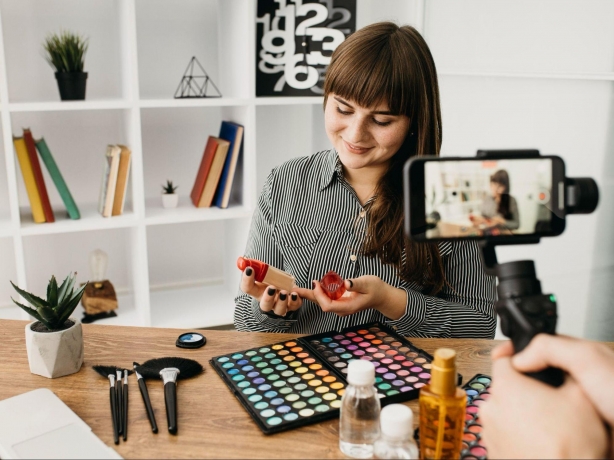Whitelisting is when a creator permits a brand to run ads through their social media account. The brand isn't taking control of its profile; it's more like getting access behind the scenes. The content still shows up under the creator's name, so when people see the ad in their feed, it feels more familiar and less like a traditional brand promotion.
Ads that use whitelisted influencer content often perform 20–50% better than traditional brand-run ads. And since brands can control the targeting and tweak the creative, they get the best of both worlds: trusted content from a real person and the reach of paid ads.
Let's break down how influencer whitelisting works, its effectiveness, and how your brand can make the most of it.
Why Brands Are Turning to Influencer Whitelisting
There's a reason whitelisting has gone from a niche tactic to a core part of many influencer marketing campaigns.
1. Fine-Tuned Targeting
Whitelisting gives you control over more advanced ad tools. You can fine-tune who sees the content by testing different versions, using lookalike audiences, or targeting people who already show interest in similar brands. This means you can test what works, cut what doesn't, and focus your budget on the audiences most likely to convert.
2. More Mileage from One Post
Most organic posts lose steam after a day or two. But when you whitelist content, you can keep sharing it as an ad long after the initial post. That means if a video or photo resonates with an audience, you recycle it to reach new people, drive clicks, or generate sales over time.
3. You Control the Ad Experience
One of the best parts of whitelisting influencer content is that you can tweak the ad without needing the creator to post something new each time. You can test different captions, calls-to-action, or visuals to see what works best. Just make sure you've discussed this with the creator beforehand.
What Whitelisting Brings to Your Marketing Strategy
Here's what the influencer whitelisting process looks like, step by step, that will help you know what to expect when setting up a campaign.1. You Set the Terms Upfront
Before any content goes live, both sides agree on how long the brand can run ads, which posts will be used, and what types of edits or creative tweaks are allowed. This avoids confusion later on.
2. The Creator Grants Access
The influencer uses a platform like Facebook Business Manager, Instagram's Brand Collabs Manager, or TikTok Creator Marketplace to give the brand permission to run ads through their account, without handing over full control.
3. You Launch the Ads
Once you have the permission, your team can promote the influencer's post directly from their handle or create new dark posts that look native but only show up as paid ads.
H3: 4. You Track and Optimize
Just like with any ad campaign, you monitor performance, test what's working, and make adjustments to get the most out of your budget.
Many brands work with an influencer marketing agency to help manage whitelisting, sort out usage rights, and make sure the content performs. This way, you can keep your focus on reaching the right audience, boosting engagement, and getting more out of your ad spend.
Risks to Know Before Whitelisting Influencer Content
When it's done right, whitelisting can make a big impact. But there are a few common pitfalls to watch out for.
1. Overstepping Boundaries
Running ads from someone else's profile gives you access to their name, tone, and following. If the creator isn't fully aware of how their content is used, you have to face legal consequences. A 2024 report found that 57% of influencer ads lacked clear disclosure, which can lead to confusion, broken trust, or even platform penalties.
How to avoid it: Be clear from the start. Explain how the content will be used, on which social networks it will be shared, and for how long. Put everything in writing.
2. Poor Ad Creative
If the ad looks or sounds different from what their audience is used to, it can feel off. People notice when something doesn't feel like their usual content, and that disconnect can hurt both the creator's trust and your brand's image.
How to avoid it: Keep the creator's voice and visual style front and center. If you're working with an influencer marketing agency, they'll guide this process and loop the creator in on any ad variations before going live.
3. Tracking Issues
With whitelisted ads, the brand and the creator don't always see the same data. Maybe you're tracking performance one way, but they can't access those results, or vice versa. That disconnect can lead to confusion about what's working.
How to avoid it: Talk through how results will be shared before the ad goes live. Set up a shared dashboard or just agree to check in regularly so everyone stays on the same page.
Best Practices for Influencer Whitelisting
If you're adding whitelisting to your marketing strategy, here's how to do it right.
Pay Creators for the Extra Value
Whitelisting influencer content gives your brand more control and extended reach, so it makes sense to adjust compensation accordingly. Most influencers charge a fee (usually a percentage) on top of their standard rate when whitelisting is part of the deal, since the content continues working long after the original post goes live.
Stick to the Creator's Voice
The most viral whitelisted ads feel natural. Adopt a tone, style, and visuals that match your followers' expectations. This will help you create content that your audience is interested in.
Share performance results
Whitelisting influencer marketing works best when it's a transparent collaboration. Let the creator know what's getting clicks, driving engagement, or sparking conversations. It shows respect for their role and helps you both make smarter decisions for future campaigns.
Final Thoughts
Whitelisting influencer content is one of the most effective ways to make paid campaigns feel personal. It combines the trust and relatability of organic posts with the reach and targeting power of ads.
So next time you run an influencer marketing campaign, don't stop at the post. Talk about whitelisting upfront, get clear on the details, and set the stage for content that keeps delivering results long after it's published.






